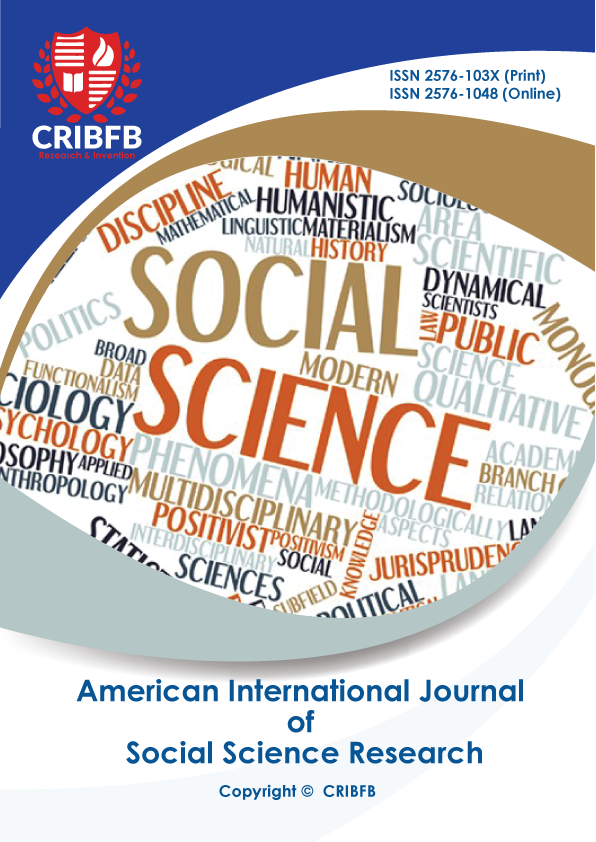THE PERSPECTIVES OF UROZGAN INSTITUTE OF HIGHER EDUCATION LECTURERS TOWARD HELMS ONLINE TEACHING AND LEARNING
Main Article Content
Abstract
This study investigates to find out the attitudes of Urozgan institute of higher education lecturers about the Higher Education Learning and Management System (HELMS). The data was collected from 19 lecturers (masters and bachelors) in survey design. The overall number of lecturer in this institute are forty (only males); nineteen (19) of them are enrolled in the survey and chosen as random sampling. The data has been collected using a questionnaire consisting of numerous closed-ended and open-ended questions. The language of the questionnaire was Pashto, the native language of the participants; later, the results were translated to English. Furthermore, the data were analyzed in the Statistical Package in Social Science (SPSS) program to find out the frequency and percentage of the items. The finding of the study suggests that the lecturers have negative feelings about the HELMS system. They believed that the system was unsuitable in Afghanistan's public universities. The participants added that technical errors, low internet connections, and complexities with portals are the main barriers to the system. They also suggested that using HELMS needs a high-quality internet connection and cost. Besides, the participants stated several common alternative programs instead of HELMS, such as; WhatsApp groups, Telegram channels, Zoom meetings, and Google classrooms, which also motivate policy makers to consider.
JEL Classification Codes: I20, I21, I23, I28.
Downloads
Article Details
Issue
Section
How to Cite
References
Abed, K. E. (2019) Electronic Learning and its Benefits in Education. EURASIA Journal of Mathematics, Science and Technology Education, 15(3), 1-8. https:doi.org/10.2933/ejmste/102668
Arkorful, V. (2014). The role of e-learning, the advantages of its adoption in Higher Education. International Journal of Education and Research, 2(12), 397-410. https://www.ijern.com/E-learning.php
Creswell, J. W. (2010) Educational Research: Planning, Conducting, and Evaluating Quantitative and Qualitative Research (4th ed.). New York: Pearson.
Goyal, S. (2012) E-Learning: Future of Education. Journal of Education and Learning, 6(2), 239-242. https://dx.doi.org/10.11591/edulearn.v6i4.168
Hadadnia, S., Hadadnia, N., & Shahidi, N. (2012). Effects of Teaching through Online Teacher versus Real Teacher on Student Learning in the Classroom. Contemporary Educational Technology, 3(1), 50-59. Retrieved from https://dergipark.org.tr/en/pub/cet/issue/25727/271452
Huynhi, B.V. (2019). Roles of E-Learning in Higher Education. Journal of Critical Reviews, 6(4), 7-13.
Mohammadi, M. K., & Mohibbi, A. Z. (2021). investigating the challenges and factors influencing the use of the learning management system during the COVID-19 pandemic in Afghanistan. Education and Information Technologies, 26, 5165–5198. https://doi.org/10.1007/s10639-021-10517-z
Mubsalat, M. M. (2012). The Impact of English Interactive Online on the Students’ Achievement in Language in Jordan. ERIC Clearinghouse, 2 (11), 1-14. https://eric.ed.gov/?id=ED538342
Nguyen, T. (2015). The Effectiveness of Online Learning: Beyond No Significant Difference and Future Horizons. MERLOT Journal of Online Learning and Teaching, 11(2), 309-319.
Sediqi, M. S., & Mirzad, A. M. (2020). Exploring attitudes of English department students toward online education in Afghanistan Universities. International Journal of Advanced Academic Studies, 3(1), 162-170. Retrieved from: https://www.allstudyjournal.com/archives/2021.v3.i1.C.482
Shahibi, M. S., & Rusli, K. N. (2017). The influence of internet usage on student’s academic performance. International Journal of Academic Research in Business and Social Sciences, 7(8), 873-887. http://dx.doi.org/10.6007/IJARBSS/v7-i8/3301
Stern, J. (2010). Introduction to Online Teaching and Learning. Retrieved from: http://www.sloan-c.org/resources/index.asp




